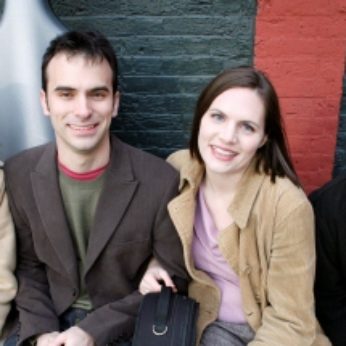Composer: Benjamin Britten (b. 1913 - d. 1976)
Performance date: 29/06/2013
Venue: St. Brendan’s Church
Composition Year: 1941
Duration: 00:25:02
Recording Engineer: Damian Chennells, RTÉ lyric fm
Instrumentation: 2vn, va, vc
Instrumentation Category:String Quartet
Artists:
Jupiter String Quartet (Nelson Lee, Meg Freivogel McDonough [violins], Liz Freivogel [viola], Dan McDonough [cello]) -
[quartet]

Britten’s First
Quartet was composed while he was in
and was commissioned by that famous patron of music, Elizabeth Sprague Coolidge,
who gave him barely three months between commission and the
had sketches for a quartet to hand and was able to complete the commission on
time despite having to work in a garden shed. Coolidge was a remarkable woman,
who inherited a substantial fortune and, on account of her great love of music
– she herself was a pianist – decided to devote her wealth to the support of
chamber music. She and Paul Sacher in
or otherwise supported most of the significant composers of the twentieth
century. It is not yet clear who if anyone will be their twenty-first century
successor.
The opening of the
quartet is extraordinary, disembodied high-pitched clusters singing above the
pizzicato cello, eventually fading away to reveal a brutally thrusting Allegro
that in turn is overcome by the return of the luminous, otherworldly opening. This
intensely concentrated movement springs a final surprise in the coda. The brief
Scherzo takes up the tale with a busy march shot through with explosive
interjections, increasing the effect of the serene slow movement that follows. This
is the heart of the work and its warmth and lyricism stands comparison with the
great slow movements from an earlier era. The high-spirited finale returns to
the D major of the first movement, a lively attempt at a fugue is swept away by
a broad and expansive melody with hints of Les
Illuminations and as in the opening movement the two ideas alternate on
stage until finally brought triumphantly together.
Copyright © 2025 West Cork Music. All rights reserved.
Designed and developed by Matrix Internet